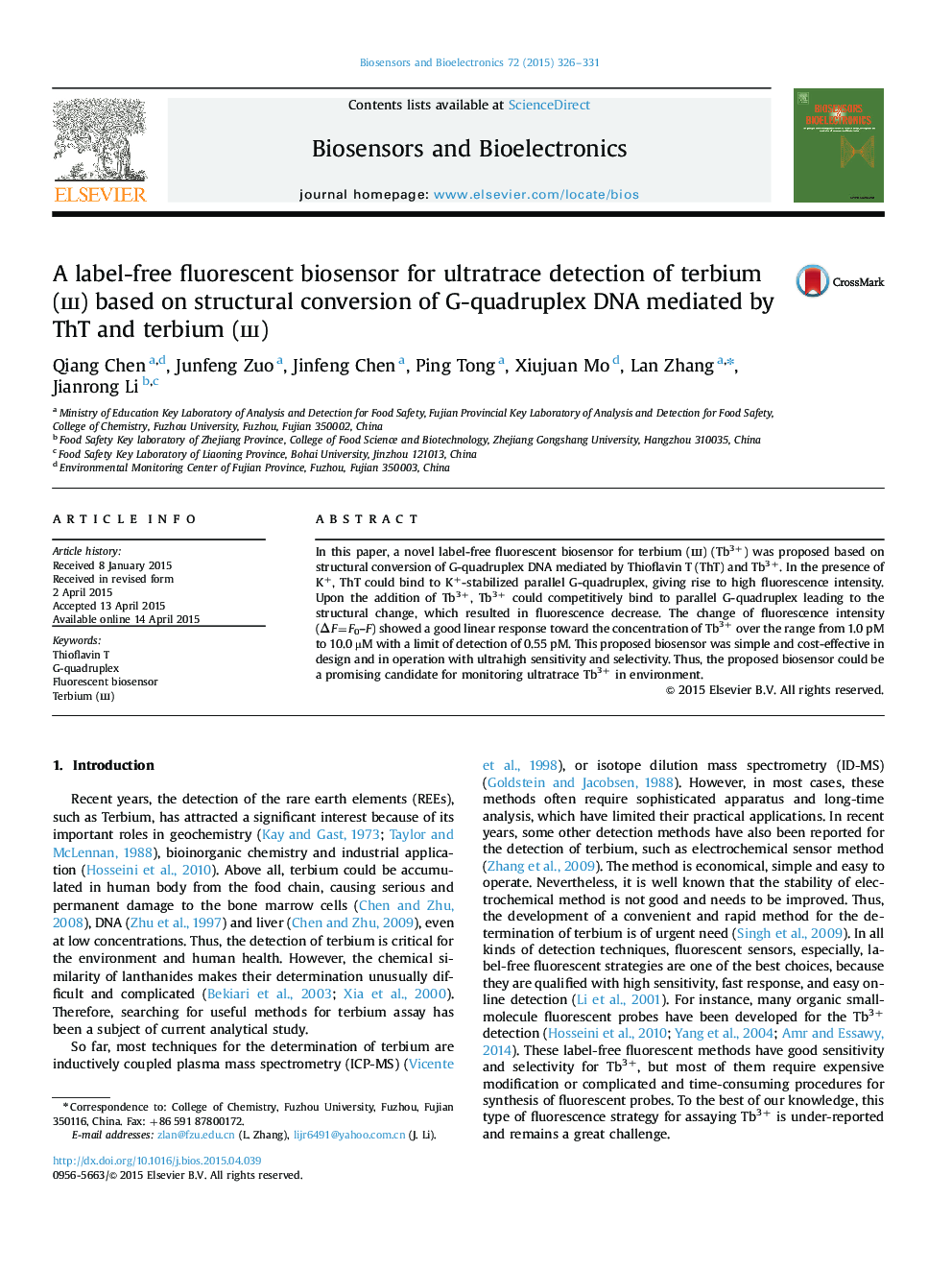| Article ID | Journal | Published Year | Pages | File Type |
|---|---|---|---|---|
| 866331 | Biosensors and Bioelectronics | 2015 | 6 Pages |
•This is the study about using Tb3+ and ThT to mediate the structural conversion of G-quadruplex DNA.•Based on the structural conversion of G-quadruplexes, a convenient and low cost detection method of Tb3+ was developed.•Tb3+ and ThT have obvious advantages that can be applied to selectively identify parallel and antiparallel G-quadruplexes.
In this paper, a novel label-free fluorescent biosensor for terbium (ш) (Tb3+) was proposed based on structural conversion of G-quadruplex DNA mediated by Thioflavin T (ThT) and Tb3+. In the presence of K+, ThT could bind to K+-stabilized parallel G-quadruplex, giving rise to high fluorescence intensity. Upon the addition of Tb3+, Tb3+ could competitively bind to parallel G-quadruplex leading to the structural change, which resulted in fluorescence decrease. The change of fluorescence intensity (ΔF=F0–F) showed a good linear response toward the concentration of Tb3+ over the range from 1.0 pM to 10.0 µM with a limit of detection of 0.55 pM. This proposed biosensor was simple and cost-effective in design and in operation with ultrahigh sensitivity and selectivity. Thus, the proposed biosensor could be a promising candidate for monitoring ultratrace Tb3+ in environment.
